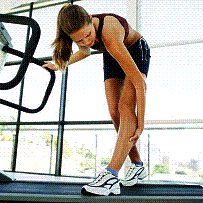It is a well-acknowledged fact that one’s workplace is his health’s worst enemy. When we are single-mindedly focused on our work in the closed confines of an office, our body bears the brunt of it. As a result:
- Muscles become sore, joints begin to ache.
- Weight gain is practically inevitable.
- Eyesight weakens.
- Stress levels are on an all time high.
Since the body has to suffer due to your commitment to work, why not do a little something to lighten its burden? Here are some tips on how you can keep your body fit and healthy, even while at the workplace.
Don’t Be a Vegetable
If you simply sit on your desk all day, your sedentary lifestyle will eventually impact your weight. In fact, a USA-based study by CareerBuilder found that 41% of professional employees claim that they gained weight at their present job.
Even without statistical evidence, it would not be hard to believe that bad working habits cause weight gain. So, what can you do to avoid this, while in the office? Make the following small changes:
- Do not simply sit at your worktable. Move around. For instance, walk about when reading a file. Stand, if nothing else.
- Whenever possible, get up and contact a colleague personally instead of using the phone.
- Take the stairs as frequently as possible.
- If you are really motivated, keep some simple exercise equipment underneath your desk – dumbbells or restriction bands perhaps. If your office has a gym, well, nothing like it; go at least thrice a week.
- Eat breakfast daily and carry your own lunch to office.
Take a Break
If you keep working non-stop, not only does your mind and body, but even work output suffers. Thus, incorporate the following habits into your schedule:
- Every one hour, get up and stretch before resuming work.
- Never have lunch at your desk. Your lunch break is the time to give rest to your mind and relax your body as well.
Surf the Net Quick
As per a recent research by the National University of Singapore, web-browsing rejuvenates exhausted employees and enhances their productivity levels. Thus, each time, after your hourly stretch, surf the internet for a quick five minutes.
Do whatever you like – read some news, watch a video or two or visit your favorite blog. However, make sure whatever you do takes only a few minutes and does not distract you from your work.
No Smoking
Most people take to smoking to beat the stress in office. Their ‘breaks’ from work comprise of smoking outside the building. If you’re doing this too, you are just inviting trouble.
Remember, it is never too late to quit. Even if you’ve been smoking for years, motivation, and a suitable smoking cessation aid can help you kick the butt for good. There are several options to help quit smoking:
- Nicotine Replacement Therapy which may gradually wean you off cigarettes.
- E-Cigarettes, which may be quite helpful for chain-smokers since they re-create the experience of smoking and thus reduce cravings.
- Counseling and medication, for which you will have to consult certified professionals.
About The Author: Vani Chugh is a professional blogger with a special interest in the technology and health niche. She currently writes blogs and guest posts for ecigarettereviewed. Please click here to visit the website.
Links To Studies Used:

